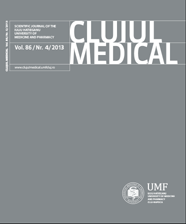Anatomical Variants Of Tympanic Compartments And Their Aeration Pathways Involved In The Pathogenesis Of Middle Ear Inflammatory Disease
Keywords:
middle ear, mucosal folds, ventilation pathways, inflammatory processAbstract
Aim: The aim of this article is to review the anatomy of middle ear compartments and folds and to demonstrate through anatomical evidence their presence at birth. Additionally, their role in the obstructions of middle ear ventilatory pathway is highlighted.
Methods: Ninety-eight adult temporal bones, with no history of auricular disease and fifteen newborn temporal bones were studied by micro dissection. Documentation was done by color photography using the operation microscope.
Results: Our micro-dissections have showed that mucosal folds from the middle ear are steadily present since birth, given that they were found in all newborn temporal bones. The mucosal folds in our normal adult material, showed some variations including membrane defects but they were constantly present. Our micro dissections showed that the epitympanic diaphragm consisted, in addition to malleal ligamental folds and ossicles, of only two constantly present folds: the tensor tympani fold and the incudomalleal fold. When the tensor fold is complete the only ventilation pathway to the anterior epitympanic space is through the isthmus, whereas its absence creates an efficient additional aeration route from the Eustachian tube to the epitympanum.
Conclusions: The goal of surgery in the chronic pathology of the middle ear should be restoration of normal ventilation of the attical-mastoid area. This is possible by removing the tensor fold and restoring the functionality of the isthmus tympani.
Downloads
Published
How to Cite
Issue
Section
License
The authors are required to transfer the copyright of the published paper to the journal. This is done by agreeing to sign the Copyright Assignment Form. Whenever the case, authors are also required to send permissions to reproduce material (such as illustrations) from the copyright holder.

The papers published in the journal are licensed under a Creative Commons Attribution-NonCommercial-NoDerivatives 4.0 International License.

